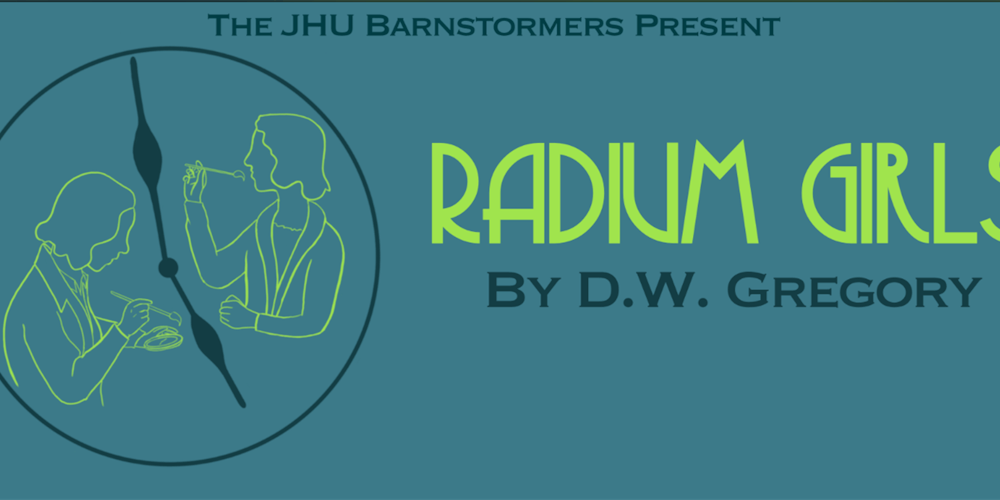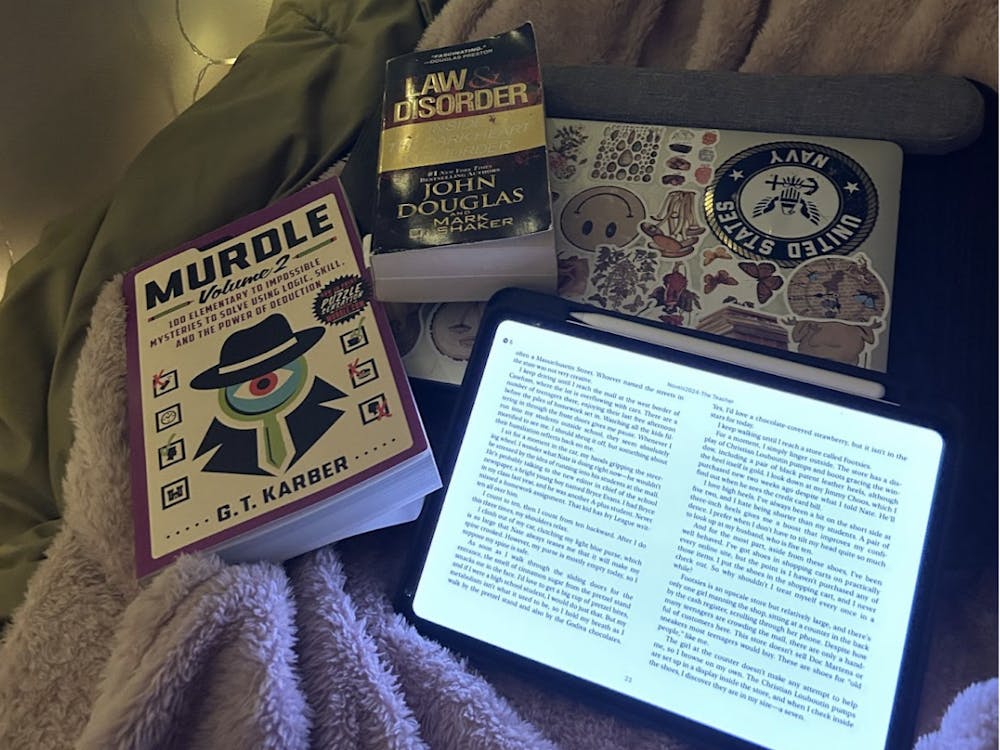A single light shines on a ticking clock. As the clock ticks, we are told the story of the Radium Girls, a play based on a book by Kate Moore of the same title. The play recounts the true story of a group of women in the 1920s who worked at a dial-painting company and produced watches whose numbers were painted with radium to make them glow.
The watches sold like wildfire during a time when radium was renowned as a curative substance for all kinds of maladies. So when the women who interacted with the radium every day all started getting the same strange symptoms… how did the company respond?
This is one of many questions in the two-hour Barnstormers production. The play touches on the U.S. Radium Corporation’s decisions in response to these symptoms and from there goes on to follow the Radium Girls’ fight for justice.
The play, written by D.W. Gregory, is directed by junior Liesel Arauz Vallecillo and follows the accounts of two main characters: Grace Fryer (played by Tessa Barcelo) and Arthur Roeder (played by Ander Diez). Compared to the novel, the play follows the characters in a much more personal way, choosing to follow fewer of the Radium Girls to be able to fully encapsulate their stories in the time provided.
When you first hear about the play, it sounds boring. Think about it: It’s a two-hour and 10-minute show exploring the battle between ethics and corporate greed in the 1920s. The average person won’t be hooked by the logline.
But this play surpasses expectations. The set itself is simple. A few tables, a lot of chairs and a door serve many different purposes throughout the play. But its simplicity allows other changing aspects of the play to stand out more. These include the makeup that slowly shows the Radium Girls’ deteriorating medical conditions and the costumes that hint at changes in the characters as the plot progresses.
These dynamic technical aspects are arguably the most fun part of the play. The part that probably gave the producers the greatest headache is the fact that most actors have multiple roles throughout the play.
Barcelo shared in an interview with The News-Letter that her favorite part of the play was how the cast had the opportunity to act in different roles.
“Everyone gets a chance to showcase so many different sides of themselves,” she said.
And it’s true. At one point you are watching Lulu Hassanein play Mrs. MacNeil, this aggressive middle-aged woman with a thick Eastern European accent, and then, a couple of scenes later, she is Mrs. Fryer, a caring, chronically worried mother. It’s incredible to see these transitions occur and witness the actors’ range.
The acting is artistry in itself. But the play is also able to address heavy issues and manages to make the audience laugh, which keeps it from being outright depressing. At the direction of Vallecillo, the play feels seamless and everything is fed to the audience properly, bit by bit. The scenes feel personal, helped greatly by the Merrick Barn’s small size, but also facilitated by the overall set up of the stage, which feels open and inviting to the audience.
This ease Vallecillo has with directing and blocking derives not only from her extensive background in acting but also from her personal connection to the play — specifically, her interest in the intersection between public health and theater.
In an interview with The News-Letter, Vallecillo elaborated, “I really have been interested in this intersection of how art can promote public health and [activism].”
In the context of Radium Girls, the play touches on the issues of workplace hazards and corporate accountability. Vallecillo argues that the topics are not only still timely today but are also especially relevant to Hopkins.
“[It’s] so relevant to Hopkins, since Hopkins as a campus culture is very much STEM… we're the premier frontier of research and ethics. Well, this is a continuation of that conversation, and kind of keeping up the responsibility and accountability of the University,” she said.
Both topics of workplace hazards and corporate accountability are explored throughout the play, leaving the audience with a thirst for justice and creating an opportunity for viewers to discuss and apply those topics to their everyday lives.
I would like to thank the Barnstormers for the privilege of attending a dress rehearsal. There are upcoming performances of Radium Girls on Saturday, Feb. 10 at 8 p.m. and Sunday, Feb. 11 at 3 p.m. in the Merrick Barn.





